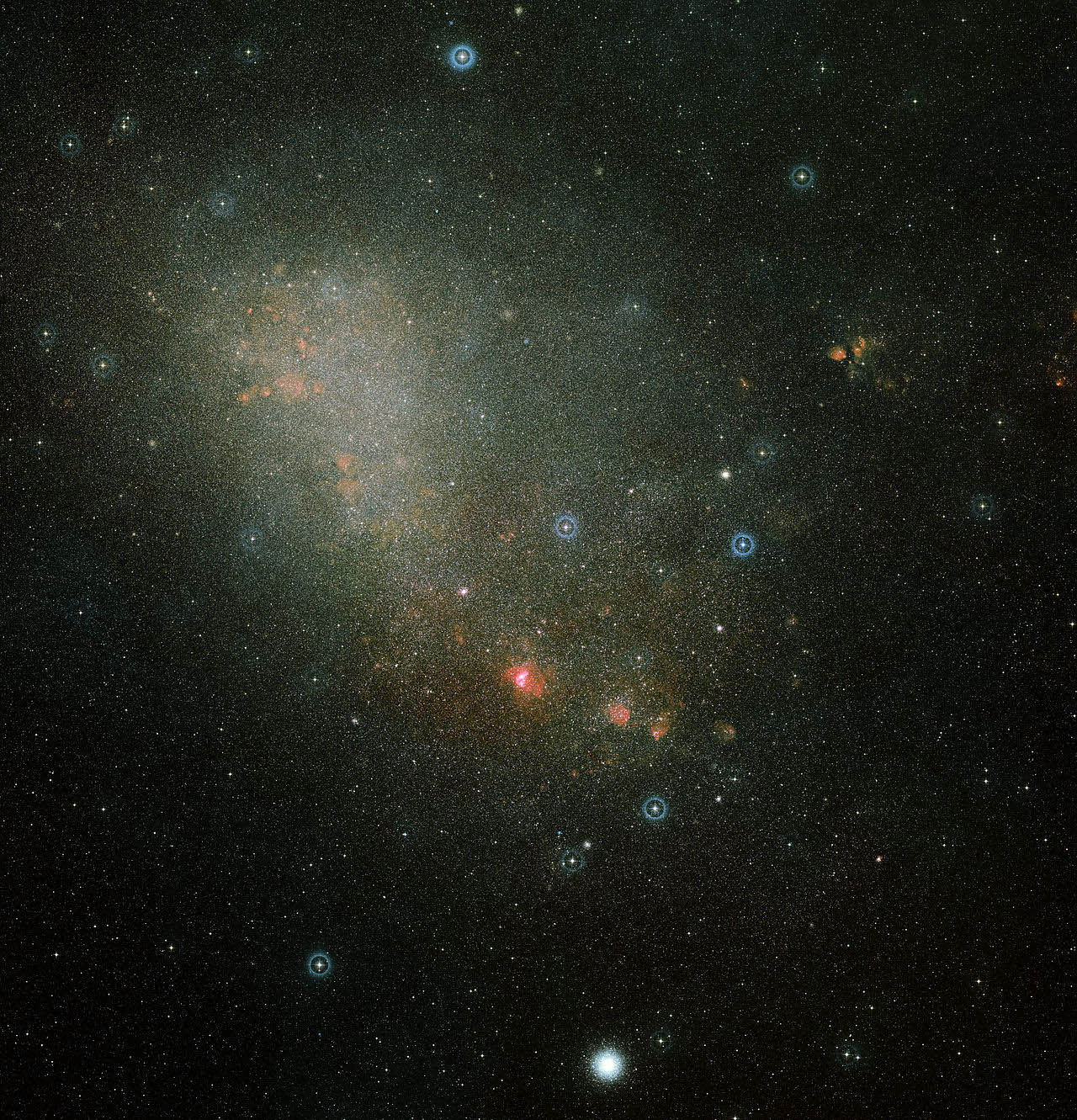
There are hundreds of billions of galaxies within that distance. The appropriately named Hubble Space Telescope can now photograph galaxies as far as 15 billion light years away. On the average, each galaxy is a dozen million light years from its nearest neighbors. The ‘white nebulae’ turned out to be objects like our own Milky Way, clusters of hundreds of billions of stars, each cluster roughly a hundred thousand light years in diameter. Hubble’s distance calculations revolutionized our ideas of the universe.

This is the famous Hubble law, which says that some cosmic phenomenon causes redshifts to tend to increase in proportion to distance. Here c is the speed of light, approximately 300,000 km/s, and H is a number we now call the Hubble constant. The trend line in the figure relates the wavelength λ of a spectral line, and its shift δλ, to the distance r of each nebula from the Earth: In 1929, he published his results, 4 which Figure 3 summarizes. As he did so, he began to confirm the general impression that the more distant nebulae have larger redshifts. At Mount Wilson observatory, Edwin Hubble began using the 100-inch reflector telescope to calculate distances to such ‘extra-galactic nebulae’ with a more accurate new technique. īy 1924, most astronomers had decided that the ‘white nebulae’ were outside our own Milky Way galaxy. The more distant the galaxy, the more the lines are shifted to the red side of the spectrum (log scale).

Idealized galaxy spectra showing typical ‘absorption’ lines (black against a rainbow-coloured background) produced by hydrogen atoms absorbing light. These are the redshifts I mentioned above, a major part of this paper’s topic. The positive values represent wavelength increases, that is, shifts toward the red side of the spectrum, as Figure 2 shows. 3 The results ranged from - 0.1% to + 0.6%, with the average being + 0.2%. Astronomers set about measuring the wavelength shifts of other nebulae, and by 1925, they had measured 45 of them. 2 That is, the pattern of lines was slightly shifted toward the blue end of the spectrum. He found that the wavelengths for M31 were all decreased by 0.1% from their normal values. The new method enabled him to measure the wavelengths of the spectral lines more precisely. Slipher had found a way to take clearer photographs of the spectra than was previously possible. Like other astronomers before him, 1 Slipher found that the wavelength spectrum of M31 is similar to the spectra of stars, containing a characteristic pattern of lines produced by hydrogen (Figure 2), calcium, and other elements. The largest and brightest nebula he could observe was one called ‘M31’, located in the constellation Andromeda. Now we call them ‘galaxies’ (after the Greek word for ‘milky’). At Lowell observatory nearly a century ago, he began examining the wavelengths of light from faint oval patches in the night sky called ‘white nebulae’ (Latin for ‘clouds’). Vesto Slipher didn’t know he was starting a counter-Copernican revolution. It is also much like the nearest galaxy visible in the northern hemisphere, M31 in Andromeda, about 2 million lightyears away. It is about 60 million light-years away, about 100,000 light-years in diameter and contains hundreds of billions of stars, much like our own home galaxy, the Milky Way. Thus, redshift quantization is evidence (1) against the big bang theory, and (2) for a galactocentric cosmology, such as one by Robert Gentry or the one in my book, Starlight and Time.įigure 1. Since big bang theorists presuppose the cosmos has naturalistic origins and cannot have a unique centre, they have sought other explanations, without notable success so far.

The odds for the Earth having such a unique position in the cosmos by accident are less than one in a trillion. The groups of redshifts would be distinct from each other only if our viewing location is less than a million light years from the centre. The shells turn out to be on the order of a million light years apart. That would mean the galaxies tend to be grouped into (conceptual) spherical shells concentric around our home galaxy, the Milky Way. Then it would be the distances themselves that fall into groups. According to Hubble’s law, redshifts are proportional to the distances of the galaxies from us. Astronomers have confirmed that numerical values of galaxy redshifts are ‘quantized’, tending to fall into distinct groups. Over the last few decades, new evidence has surfaced that restores man to a central place in God’s universe.


 0 kommentar(er)
0 kommentar(er)
